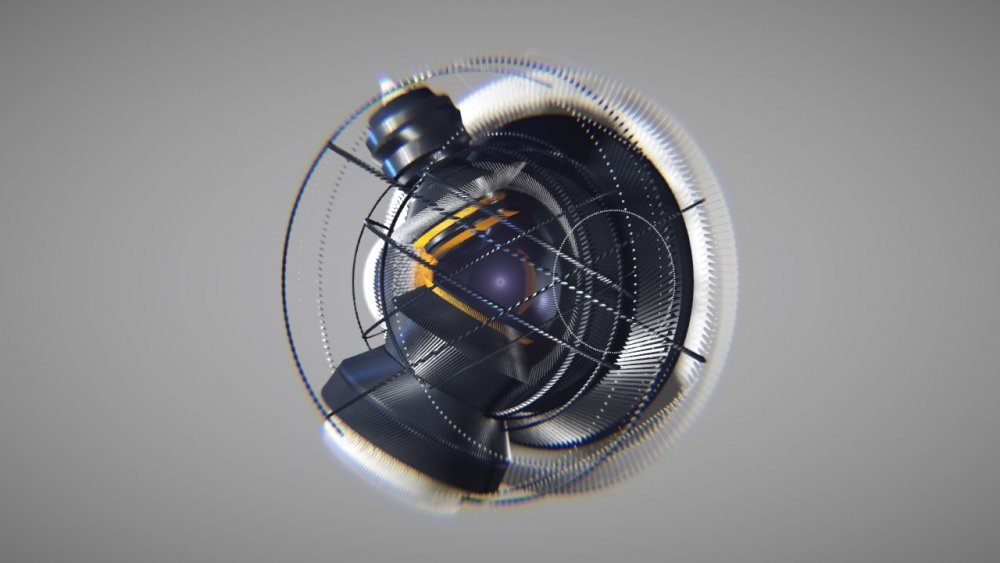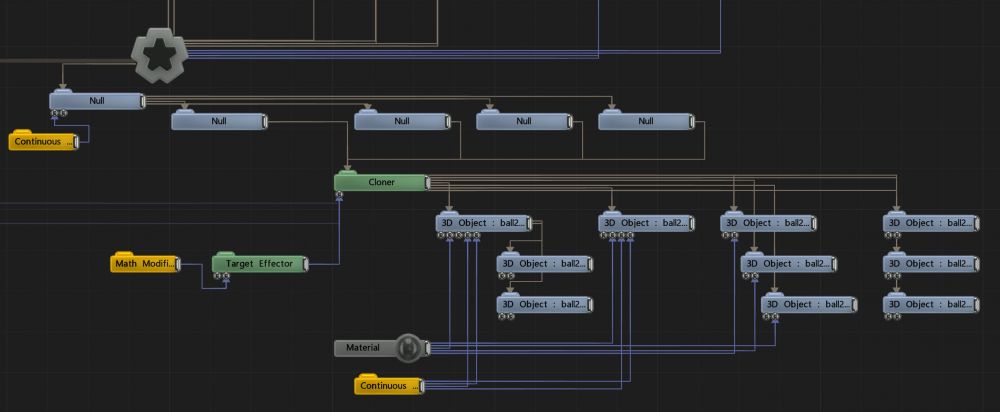Target Effector
Rotates clones to target a point in space.



This node rotates the clones to target a point described by the cloner. Best used with Falloffs disabled.
Connect the output to the effector input of any cloner node to apply it to the camera system. Multiple effectors connected to the same output will stack, and order of operations chosen by position on the nodegraph.
These properties control the 3D transforms of the node. Transforms will generally be inherited by child nodes, although they can be ignored through the Inherit Transform Channels attributes.
| Parameter | Details |
|---|---|
| Position X | Move along the local x-axis. |
| Position Y | Move along the local y-axis. |
| Position Z | Move along the local z-axis. |
| Rotation Heading | Rotate around the local y-axis. |
| Rotation Pitch | Rotate around the local x-axis. |
| Rotation Bank | Rotate around the local z-axis. |
| Scale X | Scale along the local x-axis. |
| Scale Y | Scale along the local y-axis. |
| Scale Z | Scale along the local z-axis. |
Toggle which transform channels should be inherited from the parent node. By default, all transforms will be inherited.
| Parameter | Details |
|---|---|
| Position X | Toggle inheritance of the X Position from the parent. |
| Position Y | Toggle inheritance of the Y Position from the parent. |
| Position Z | Toggle inheritance of the Z Position from the parent. |
| Rotation Heading | Toggle inheritance of the Rotation Heading from the parent. |
| Rotation Pitch | Toggle inheritance of the Rotation Pitch from the parent. |
| Rotation Bank | Toggle inheritance of the Rotation Bank from the parent. |
| Scale X | Toggle inheritance of the X Scale from the parent. |
| Scale Y | Toggle inheritance of the Y Scale from the parent. |
| Scale Z | Toggle inheritance of the Z Scale from the parent. |
| World Position Only | Inherit the world position from the parent only, rotation and scale will be ignored. Overrides above properties. |
| Inherit Time | Toggle inheritance of time from the parent. |
| Parameter | Details |
|---|---|
| Blend Amount | Controls the amount the resulting transforms of each clone after the effector is applied is blended with the original transform. |
| Space | The transform space the Effector uses to influence the clones.
|
| Affect Heading | Toggle whether the rotation heading of the clones will target the target effector. |
| Affect Pitch | Toggle whether the rotation pitch of the clones about the x axis is affected. |
| Invert Direction | Invert the direction of the object’s target. |
These properties control where an effector can affect the clones.
| Parameter | Details |
|---|---|
| Falloff Mode | Change how the falloff from the original object is calculated.
|
| Linear Falloff Axis | The falloff axis to use when the effector is in linear mode.
|
| Falloff | The outer radius of the falloff, where the effector no longer effects the clones. |
| Inner Falloff | The inner radius of the falloff, where the effector effects the clones strongest. |
| Falloff Power | Change how quickly the nodes falloff from the effector |
| Falloff Size | The X size of the falloff when in box mode. |
| Invert Falloff | Invert the direction of the falloff. |
These properties control how an effector transforms the clones.
| Parameter | Details |
|---|---|
| Rotation Apply Mode | The method by which the effectors rotation properties are applied to the clone.
|
| Name | Description | Typical Input |
|---|---|---|
| Target Node | Input a node for the cloners to face. | Null |
| Procedural Falloff | Use a procedural system to generate falloff from. Useful for creating complex and unconventional falloffs from an Effector. | Procedural Root |
| Transform Modifiers | Apply the transforms of another node to this node. | Null |
| Target Node | Modifiy the rotations of the node to always direct the z axis towards the input. | Null |
| Local Transform Override | Apply the transforms of another node to this node, relative to its parent. | Null |